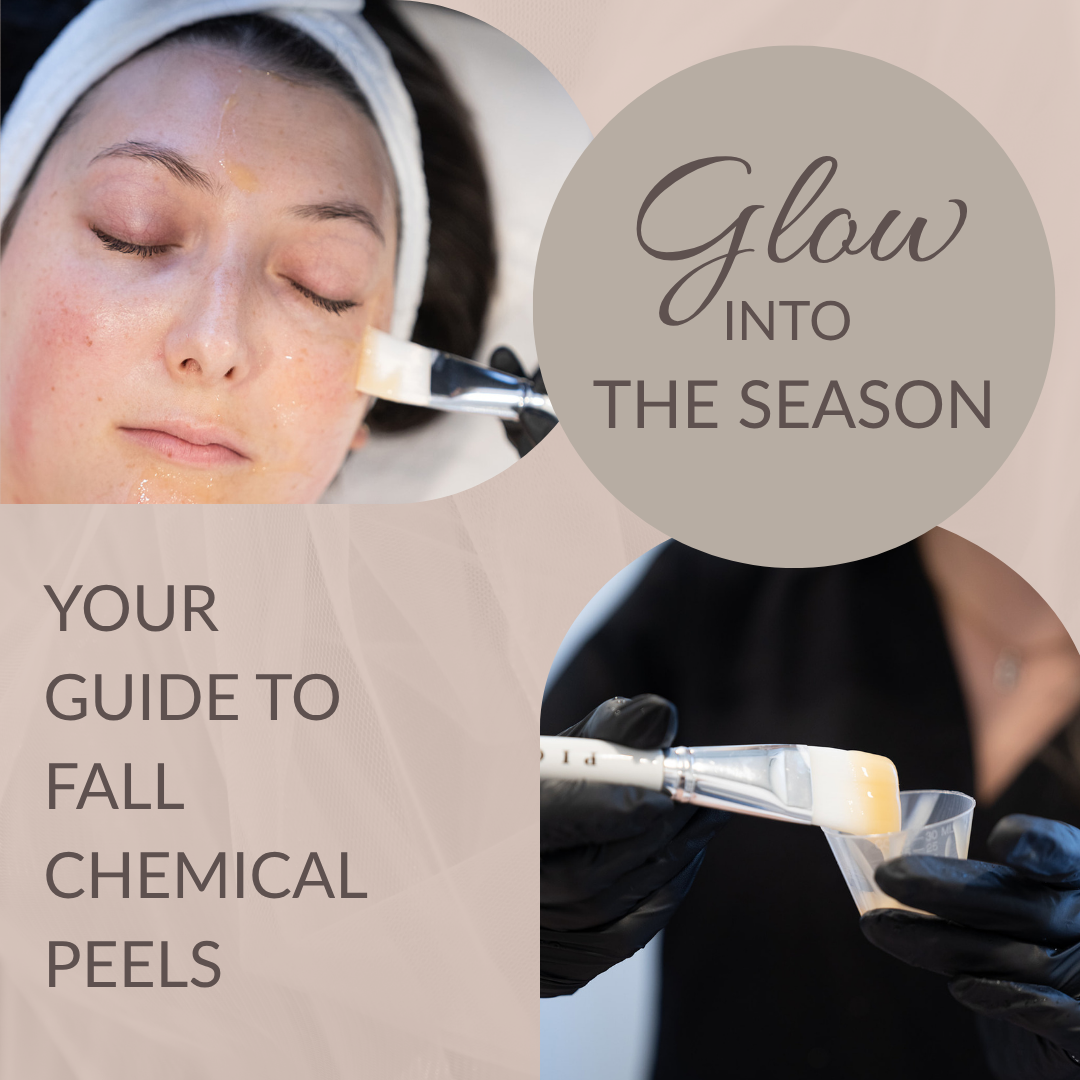As the air turns crisp and cozy sweaters come out, there’s no better time to refresh and renew your skin. Fall is officially peel season—the perfect moment to clear away summer’s buildup, repair damage, and step into the holidays with a radiant glow.
A chemical peel is a safe and effective treatment that gently resurfaces the outer layers of your skin. By removing dead skin cells and stimulating renewal, it can address acne, fine lines, uneven pigmentation, and dullness. Most peels involve little downtime and only minimal redness, making them a convenient option for visible, lasting results. To achieve the best outcome, peels are typically performed in a series of four to six treatments, tailored to your skin’s needs and goals.
So why is fall the ideal season for peels? With shorter days and gentler sunlight, there’s less risk of post-peel sun sensitivity, making it easier to protect your skin as it heals. After a summer of sunscreen, sweat, and pool water, a peel also helps sweep away buildup and repair any damage left behind. The cooler, drier air of autumn is more comfortable on freshly exfoliated skin compared to the irritation of hot, humid summer days. And because peels prep your skin to better absorb serums and moisturizers, they’re especially beneficial as the air turns drier. Best of all, starting a peel series now ensures that your skin will be smooth, radiant, and holiday-ready by the time the celebrations begin.
To make the most of your treatment, it’s important to prepare properly. In the days leading up to your appointment, set aside topical prescriptions, retinol, and vitamin A products, and pause exfoliating ingredients such as AHAs, BHAs, salicylic acid, or benzoyl peroxide. It’s also best to avoid waxing, electrolysis, depilatory creams, and laser hair removal. For men, shaving should be skipped on the day of the peel. Sun exposure should be minimized, and if you have Botox or filler appointments scheduled, these should be timed separately unless otherwise recommended by your esthetician.
After your peel, your aftercare becomes just as important as the treatment itself. Following the post-peel kit for five to seven days and sticking to your esthetician’s product recommendations will keep your results on track. Sun exposure should continue to be avoided, and sunscreen must be applied daily—indoors and outdoors. Truly, sunscreen is non-negotiable. And finally, don’t forget to book your next peel to stay consistent with your series.
Fall is the perfect season to invest in your skin. With the right preparation, aftercare, and a customized plan, chemical peels can help you transition into the colder months with confidence and a luminous glow.
